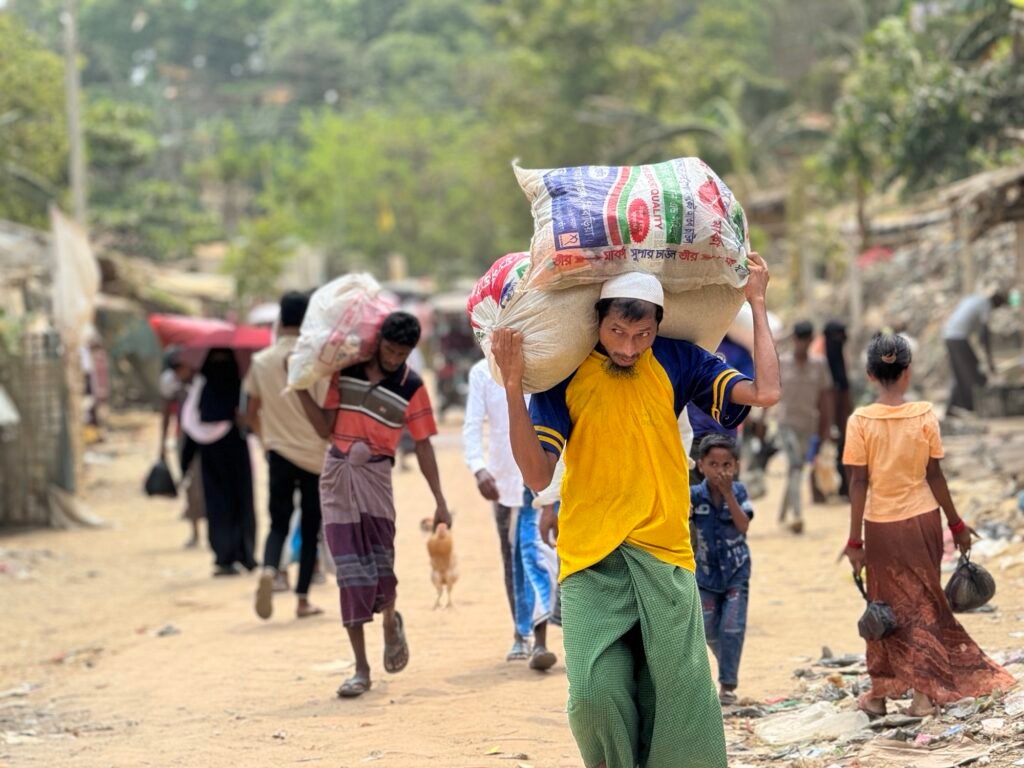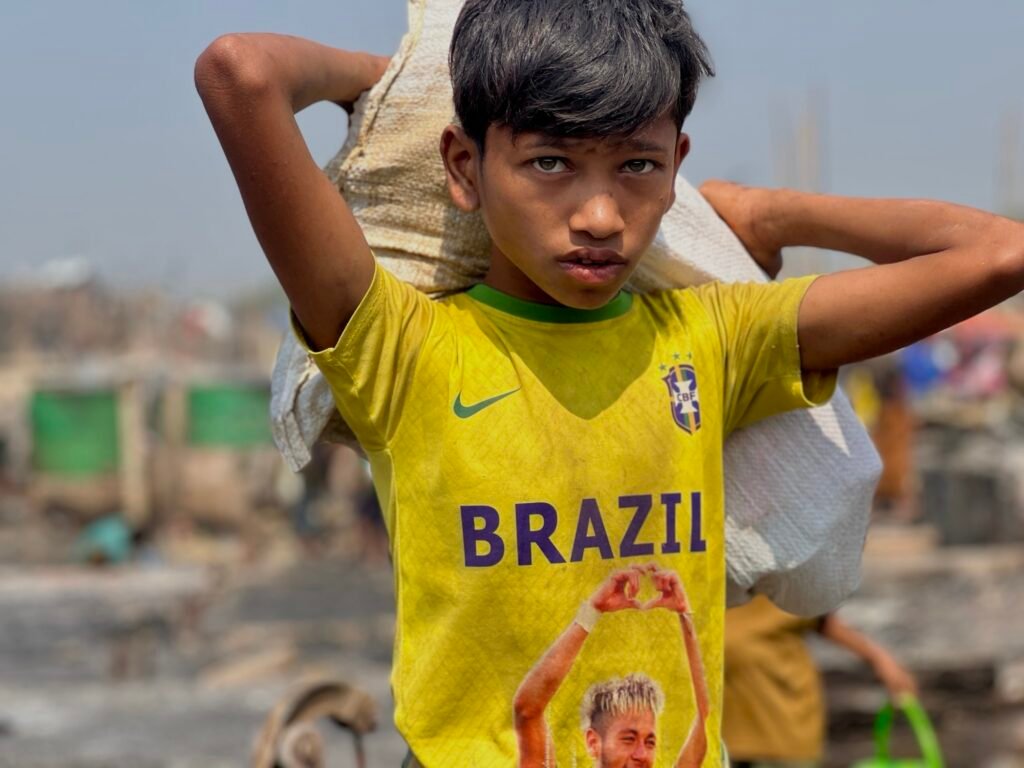
Last year, a substantial funding shortfall forced the World Food Programme (WFP) to reduce by 30% the food rations in camps in Bangladesh, where almost 1 million Rohingya refugees live, after they fled violence and persecution in Myanmar live.
Since then, the food and nutrition situation has deteriorated sharply. By November, 90% of the camp population struggled to access an adequate diet. Over 15% of children were suffering from malnutrition – the highest rate ever recorded in the camps. With movement restrictions still in place and most refugees lacking access to livelihood opportunities, the Rohingya remain heavily reliant on humanitarian aid, as the crisis approaches its 8 year.
Thanks to the European Union and other donors, WFP was able to partially reverse the ration cuts from last year. The food voucher value increased back up to US$10 per person per month, and fortified rice was introduced to address the rising malnutrition. But Rohingya refugees continue to struggle to meet their basic needs
The ration still falls short of meeting their minimum energy and nutritional requirements. Violence, insecurity, and human trafficking are increasing concerns in the refugee camps. Amidst fires, cyclones, and floods, 2023 also saw the highest number of Rohingya embarking on dangerous boat journeys. Nearly 4,500 attempted to across the Andaman Sea and Bay of Bengal, in the hope of finding a better life. At least 569 of them lost their lives.
In the following personal accounts, Rohingya refugees from the Cox’s Bazar refugee camps and Bhasan Char, an island where nearly 35,000 Rohingya refugees have been relocated to, highlight the precarious situation they find themselves in.

Since 2017, the European Union has contributed over €50 million in funding towards WFP’s emergency operations in Bangladesh. This includes the food assistance lifeline that helps the entire Rohingya population meet their basic food and nutrition needs.
With this ration, I can’t manage food for my children. I can’t buy clothes for them. I can’t even afford their treatment when they are sick.” Amidst fires, cyclones, floods, and ration cuts, single mothers like Noorsaba are more vulnerable than ever.
Violence and insecurity in the camps are on the rise. “My children are growing up; I am concerned about how to raise them safely,” says Rokeya Begum, whose husband remarried, leaving her and her children to fend for themselves.
“I miss eating meat and big fishes, but we cannot afford them,” says Romida, 60. At $10 per person per month, animal-based proteins, vegetables and fruits had disappeared from most Rohingya refugees’ diet.
As long as the ration lasts, we are happy. When the ration ends, our worries begin,” says Dholi. With limited employment opportunities and their movement restricted, the Rohingya in the camps have no other means to support themselves.
Global acute malnutrition has reached 15.1%, surpassing the emergency threshold set by WHO. There has been an increasing need for critical services at the nutrition centres, especially as more children require treatment for malnutrition.
“I am still content. God has bestowed us with a lot. I am at peace”, said Shahanaz. She moved to Bhasan Char with her husband Farid and son Torikul. Despite the hardships, she has embraced her life here.
“I am thankful for the food assistance we receive, but it is not enough. The medical facilities here are very limited,” said Abdus Salam, 75, who relocated to Bhasan Char 3 years ago. “I don’t like living like this. I feel like a prisoner.”
Habib Ullah lives in Bhasan Char with his wife and their 10-month-old daughter. “I want to educate my child, but I don’t know what the future holds for her. We can’t hope for a better future as long as we are stuck in the camps as refugees.”
Story by World Food Programme/ Publication date: 01/05/2024
http://Food ration cuts in Bangladesh: a year of struggles and hope for Rohingya refugees


